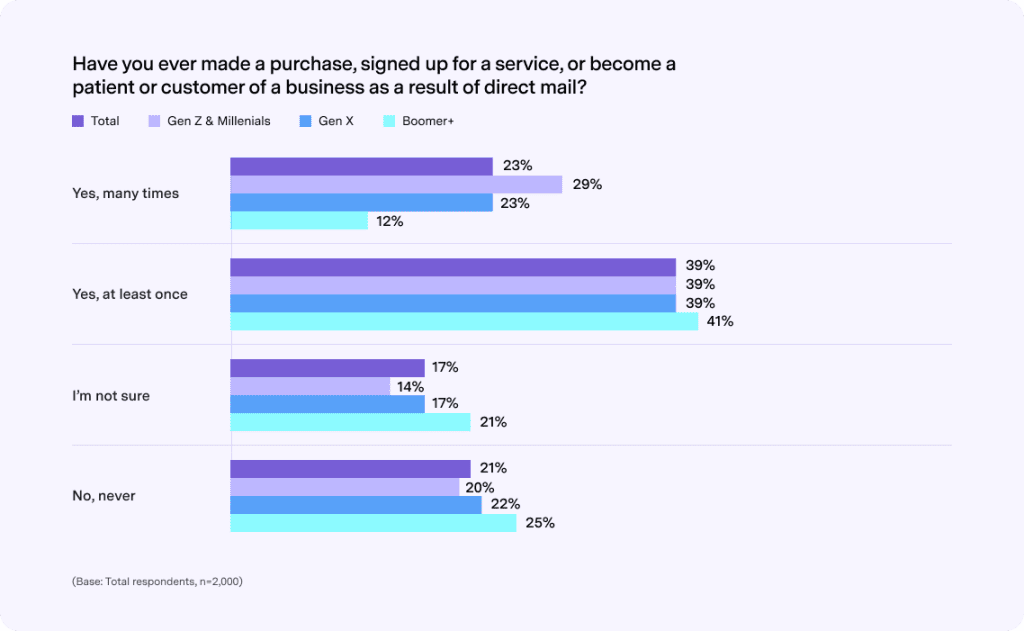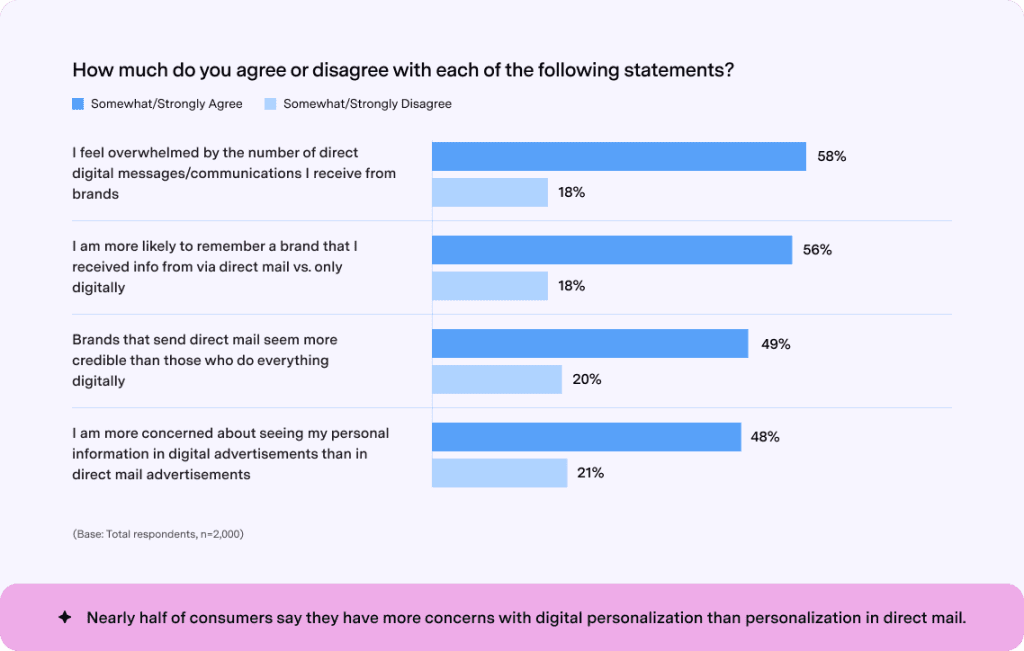Lob’s latest report reveals how physical mail is outperforming digital with younger consumers and what it means for modern marketers.
In a marketing twist few saw coming, Gen Z and Millennials, the most digitally fluent generations, are leading a renewed embrace of direct mail. According to Lob’s newly released 2025 State of Direct Mail: Consumer Insights Edition, younger consumers aren’t just noticing physical mail; they’re responding to it at higher rates than any other demographic.
The national study based on responses from 2,000 U.S. adults reveals that 85% of Gen Z and Millennials respond to direct mail, and 67% have taken action. These actions include things like purchases, sign-ups, or referrals, as a result of receiving a printed piece from a brand.

“People are inundated with digital advertising,” said Ryan Ferrier, CEO of Lob. “Our report confirms that consumers are craving real, tangible touchpoints from brands. Direct mail earns attention in ways digital often can’t, by showing up as personal, thoughtful and more human.”
Rethinking the Modern Media Mix
The findings come at a time when digital marketing is facing growing headwinds, such as rising acquisition costs, shrinking attention spans, and consumer fatigue. The report confirms that 58% of consumers feel overwhelmed by digital brand messages, while 53% say direct mail feels more valuable, exclusive, or “special.”

Other notable takeaways:
- 84% of consumers read direct mail immediately or the same day they receive it, up from 70% last year.
- 44% perceive direct mail as more trustworthy than digital channels.
- 81% say they’re more likely to re-engage with a brand after receiving a direct mail piece.
- Nearly Half of consumers say they have more concerns with digital personalization vs. personalization in direct mail.
Perhaps most telling: irrelevance is the #1 reason direct mail fails. While personalization is key, consumers expect more than a first name. Offers, timing, tone, and design must feel tailored and intentional. When it works, it works — 67% act on mail that includes personalized elements.
Performance-Driven, Not Nostalgic
What’s fueling direct mail’s resurgence isn’t a sense of retro charm — it’s performance, precision, and measurability. Once seen as slow and static, today’s direct mail has evolved into a tech-enabled, data-rich channel that operates with the same agility as digital.
Platforms like Lob are transforming how brands approach print, bringing automation, personalization, and analytics to a medium long thought resistant to real-time optimization. Campaigns can now be triggered by specific online behaviors, such as a cart abandonment or a lapsed subscription, allowing marketers to use direct mail as a timely follow-up that lands with intent.
More importantly, modern direct mail is measurable. Marketers can A/B test creative, track conversions through unique URLs or QR codes, and attribute ROI down to the individual piece. This shift turns direct mail from a branding tool into a full-funnel performer.
The result? A hybrid channel that combines the tangible trust of print with the targeting sophistication of digital. In an environment where consumer trust is eroding and ad platforms are in flux, direct mail is delivering results not because it’s old-school, but because it’s been rebuilt for the demands of today’s performance marketer.
Strategic Implications for Brands
The report underscores a growing truth: marketing saturation isn’t just a digital problem — it’s a human one. Consumers want fewer, better experiences. In that light, direct mail’s reemergence as a high-performing, emotionally resonant channel is less surprising and more strategic.
Key imperatives for marketers:
- Reevaluate spend across digital channels where returns are plateauing.
- Use physical mail to reinforce key brand messages and deepen emotional connection.
- Apply the same data rigor to direct mail as you would to your digital stack.
As privacy concerns, ad blockers, and AI-generated content increase skepticism, tangible channels like direct mail are regaining trust and driving action. For brands looking to cut through the clutter, the message is clear: it’s time to put direct mail back in the conversation.
View the full report here.

